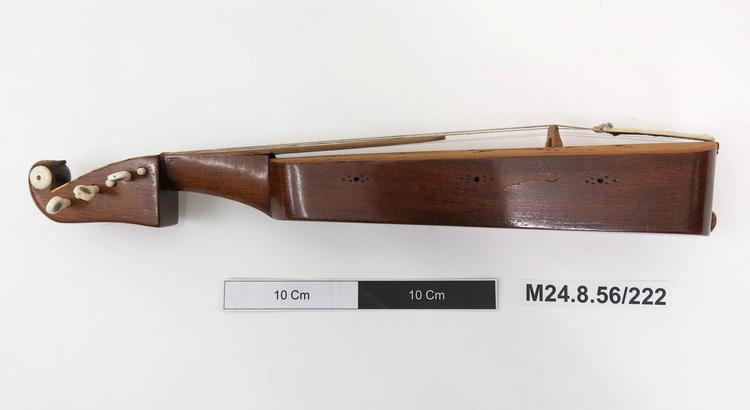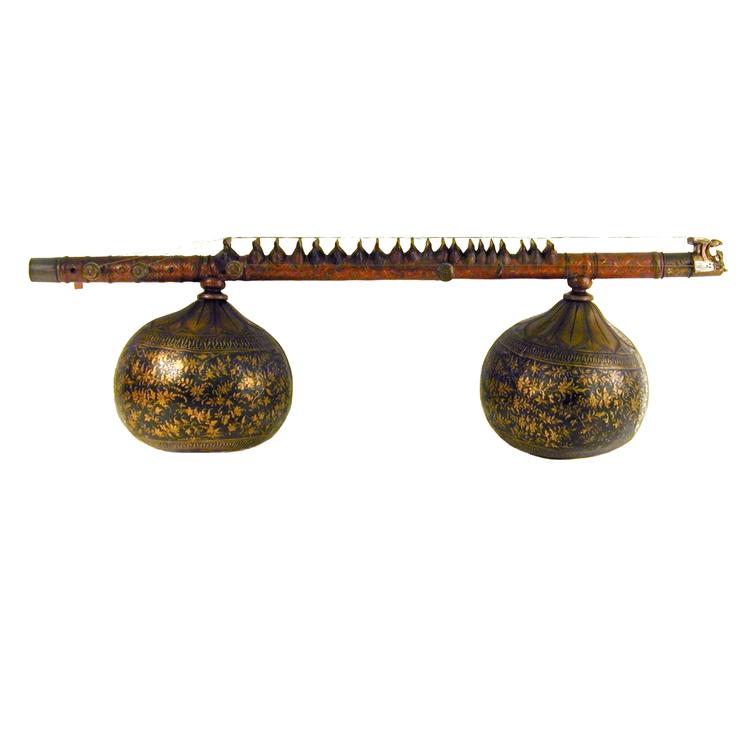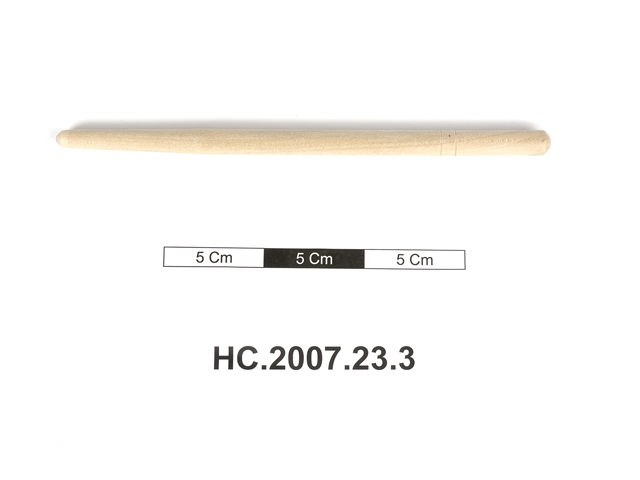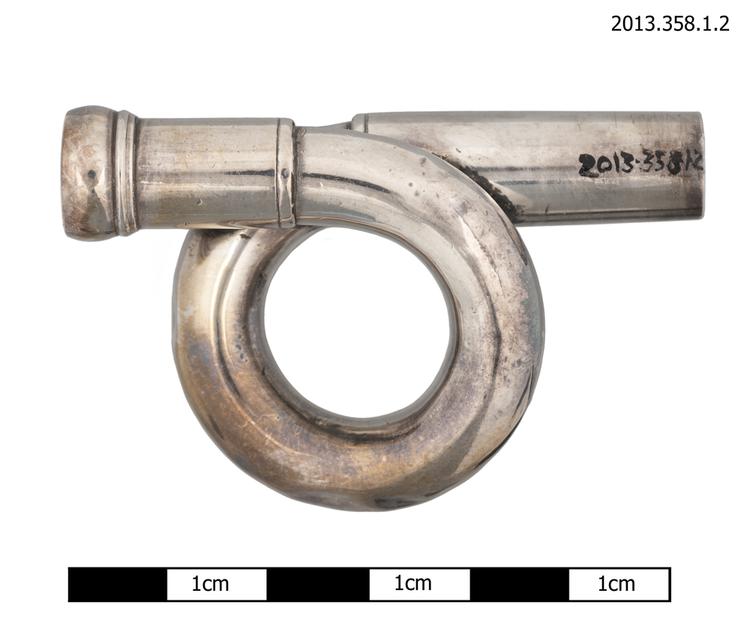
K'aman, necked fiddle ('Black sea fiddle'). Barge-shaped; the body, ribs, neck and peg-box are all carved out of one piece of wood. Three small holes, with incised spot ornamentation, are drilled into the ribs on both sides. The peg-box is of the violin-scroll shape but square and boxy, with six bone pegs (one is a dummy and not pierced). The finial is carved into the shaped of a grotesque head with eyes of mother-of-pearl and turned bone 'earphones'. The front of the peg-box is decorated with triangles of bone, mother-of-pearl and horn. The fingerboard is flat and rounded at one end; decorated with bone and mother-of-pearl as well as copper pins. The sound-board is pierced by four small holes and six c-holes (addorsed) all ornamented with incised dots. The tailpiece is of bone pierced in geometrical patterns and backed with red foil. It is also decorated with a pattern of concentric circles coloured by means of a composition, this motif also appears on the pegs. The tailpiece is attached by wire to a turned button low on the end of the instrument. The bridge is small and only slightly arched, it carries three melody strings of twisted cord (or silk) and is pierced beneath for three thin copper wire sympathetic strings. Only two sympathetic strings are present and these travel under the fingerboard and are attached to separate studs on the end. The nut for the sympathetic strings only has two grooves.
This fiddle may be an Armenian k'aman see K. Vertkov et al 'Atlas muzykal'nykh instrumentov narodov sssr' (1963), p. 90-91. In 'A Descriptive Catalogue of the Musical Instruments in the South Kensington Museum' (London:Eyre & Spottiswoode) 1874, p. 204, Carl Engel cites the name 'Kemangeh roumy', and the Russian name 'Skruibka' (skripka - fiddle) for this instrument.


































































































































































































































































































































































































































































































































